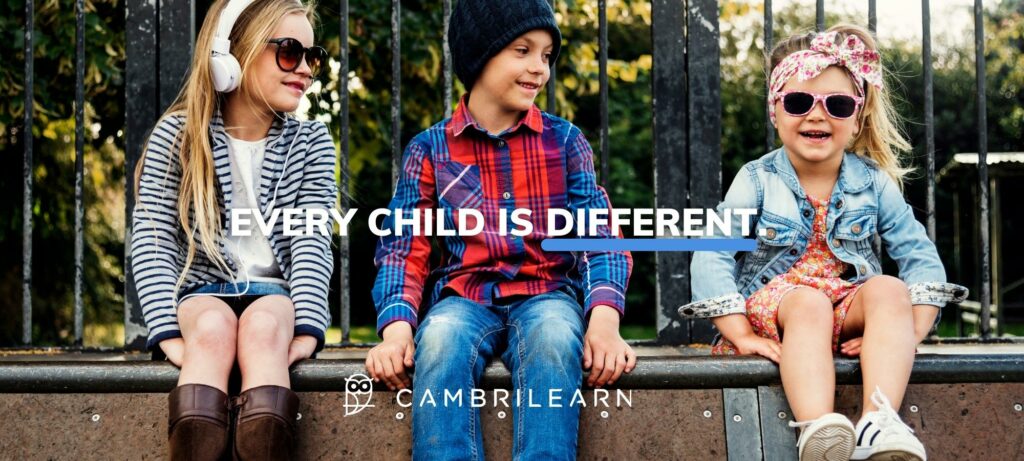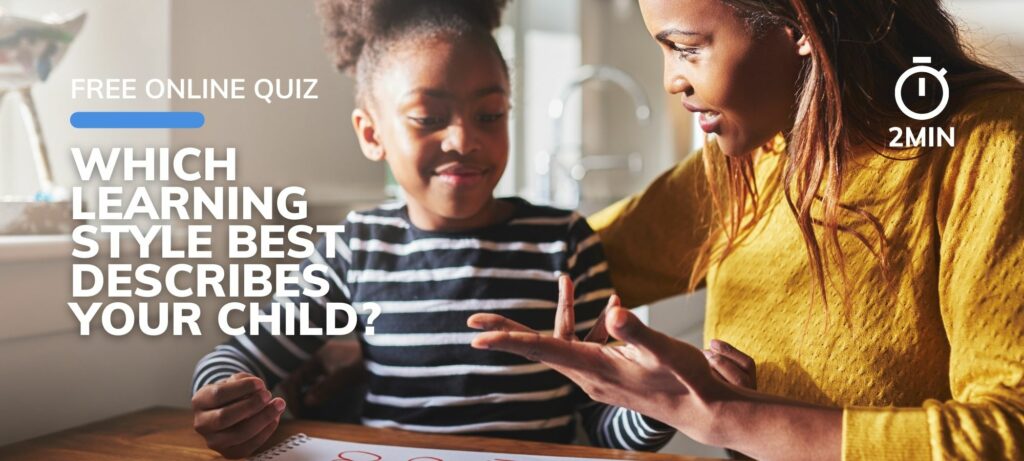Different people with different personalities will tackle the same project with different strategies. No two children are the same and therefore they will not learn in the same way or at the same pace.
In a traditional classroom setting the teacher to learner ratio is usually around 1:25. It is simply not possible for a teacher to create personalised lessons for each student. For this reason, when the teacher creates her lesson plan for a particular subject, she chooses an approach that will cater for the class average.
Understanding your child’s preferred style of learning is vital to ensure that they feel motivated in their studies. Once you understand what style of learning is best suited to your child, you can tailor their studies to fit their needs. This is what we like to call personalised learning.
Over the last few years, more and more parents and guardians are choosing a personalised, self-paced and tailored approach to their child’s education. CambriLearn is an online learning platform that doesn’t just recognise the importance of personalised learning, they prioritise it. Every child is unique and there is no “one-size fits all” approach to education. Parents and guardians should ask themselves; is my child’s education provider harnessing and nurturing my child’s individual personality?

Understanding your child’s learning style – the VARK system
It is important to note that no one learning style is better than another. As a parent, you might prefer to read a manual whilst your child might prefer to see instructions in a diagram format. This is totally ok! We should celebrate and strategically approach each student’s preferred learning style in order to promote optimal learning and knowledge retention. According to the VARK system, there are four types of learning styles – visual, auditory, reading/writing and kinaesthetic.
This short fun quiz can help you better understand your child’s preferred learning style*, and the below article will explain each of these learning styles in more detail.
Types of Learning Styles
VISUAL
Visual learners understand and remember things by sight. They retain information better when it’s presented to them in a graphic depiction, such as arrows, charts, diagrams, patterns, shapes and symbols. The best way to explain concepts to visual learners is by explaining ideas visually. For instance, when explaining a scientific process, it can be done by using a diagram.
Visual learners are usually quite neat in their work. They often close their eyes to visualize or remember something. They tend to have difficulty with spoken directions and may be easily distracted by sounds.
Here are a few practical examples of how to approach visual learners;
- Have their eyesight checked on a regular basis.
- Use flashcards to teach new concepts.
- Draw pictures to help explain new concepts and then explain the pictures.
- Colour code things.
- Avoid distractions during study times.
AUDITORY
Auditory learners prefer listening to information that is presented to them orally and they retain information better when it is heard. These learners work well in interactive group settings where open communication is present and may enjoy reading aloud to themselves. Saying things out loud helps them better understand the concept at hand. Auditory learners retain information best when it is presented to them via strategies that involve talking, such as online lectures and group discussions. They can benefit from repeating back the lessons, having recordings of the lectures, and group activities. Auditory learners may hum or talk to themselves (or others), which leads people to think that they are not paying attention, when in fact they are.
Here are a few practical examples of how to approach auditory learners;
- Ensure that they can hear what the teacher is saying.
- Have their hearing checked on a regular basis.
- Read stories, assignments, or directions out loud.
- Record yourself spelling words and then listen to the recording.
- Read test questions out loud.
READING & WRITING
Reading and writing learners consume information best when it’s in words, whether that’s by writing it down or reading it. These learners succeed with written information on worksheets, presentations, and other text-heavy resources. These learners are note-takers and perform strongly when they can reference written text. These individuals usually perform very well on written assignments. To connect with a Reading and Writing learner it is best to have them describe charts and diagrams by written statements, take written quizzes on the topics, or give them written assignments.
Here are a few practical examples of how to approach reading and writing learners;
- Encourage them to take notes during class.
- Equip them with books and reading materials to help them work through concepts.
- Encourage them to make lists.
- Promote activities such as essays, creative writing and writing projects.
KINAESTHETIC
Kinaesthetic learners (also known as tactile learners) enjoy hands-on, practical lessons and thrive when engaging all of their senses during coursework. They learn by touching and doing. Kinaesthetic learners tend to learn better when there is some type of physical activity is involved. They need to be active and take frequent breaks. These types of learners often use their hands when they talk and may have difficulty sitting still.
These learners are usually very in touch with their reality, which is why they require using tactile experience to understand something better. These learners tend to work well in scientific studies due to the hands-on lab component of the lessons. The best way to present new information to a kinaesthetic learner is through personal experience, practice and examples. These learners often communicate by touching and appreciate physically expressed forms of encouragement, such as a pat on the back.
Here are a few practical examples of how to approach auditory learners;
- Encourage lessons that involve touching, building, or drawing.
- Do lots of hands-on activities like experiments, art projects, nature walks, or role-plays.
- Don’t reprimand them if they tap their foot, walk around, or rock their chair while reading or studying.
- Trace words with your finger to learn to spell.
- Take frequent breaks during reading or studying periods (frequent, but not long).
- Use a computer to reinforce learning through a sense of touch.

Take our FREE Learning Style Quiz – HERE
If you are interested in finding out more about how you can personalise your child’s education then please get in touch to book a FREE, no-obligation education consultation.
*Whilst the information in this quiz is based on research, it was created for entertainment purposes and should not be considered a formal assessment. Please book a consult with an education expert to discuss your child’s unique learning needs.
- A unique education, for your unique child - October 25, 2022
- The Importance of exercise in education - August 4, 2022
- Education:Nature vs. Nurture - July 7, 2022






1 thought on “Which learning style best describes your child?”
My child is a Kinaesthetic learner. It is true, once you seek out how your child is able to retain information, they progressive learn and thrive in their environment.